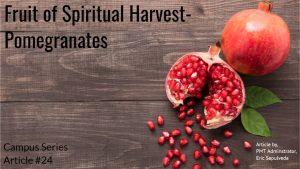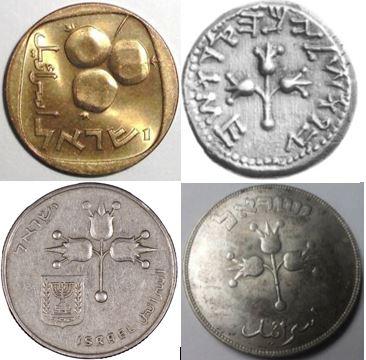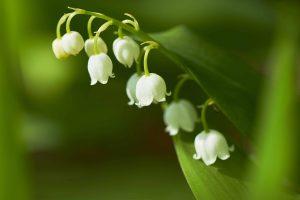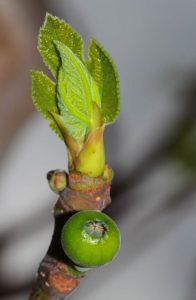Ascension Gift Ministries
[cvm_video id=”5598″]
Fruit of Spiritual Harvest: Date Honey
Date palms are first mentioned after the Israelites left Egypt and were directed to Elim, where there were 12 springs of water and 70 date palms. The fantastically sweet date fruits stood in strong contrast to the bitter waters of Marah, which they had just left. Though the Israelites were now freed from bondage and slavery, the clusters of dates hanging high on the trees were a prophetic symbol of not only The One who would save them from Death, but Preserve them through Eternal Life.
Date syrup/honey is unique in the fact that since it is so rich in the monosaccharides glucose and fructose, most of its sugar content is absorbed into the bloodstream through the tissues in our mouths. Counter-intuitively, despite having such high sugar levels, it has a low glycemic index, meaning that it raises blood glucose levels more immediately and effectively than other types of syrups and is believed to help manage blood sugar in diabetics and those who are hypoglycemic. This extremely high sugar content also makes it tremendously shelf stable for possibly years or indefinitely under ideal conditions. Its antibacterial and antioxidant properties show potential to not only fight infections, but promote long-term health.
It’s important to note that not every reference to honey in the Bible is talking about date honey/syrup. When Samson walks past the carcass of the Asiatic Lion he had previously killed, “he saw a swarm of bees and some honey [which] he scooped out with his hands and ate as he went along” (Judges 14:8-9). When King Saul was leading the Israelite army to repel the Philistines, as his “entire army entered the woods, there was honey on the ground, and [his son] Johnathan…reached out the end of the staff in his hand and dipped it into the honeycomb” (1 Samuel 14:25-26). King David proclaimed the goodness of the decrees of the Lord as being “sweeter than honey, than honey from the honeycomb” (Psalm 19:10). King Solomon’s epic musical Song of Songs has a character sing that they have “eaten [their] honeycomb and [their] honey}” as a way to metaphorically describe a sensuous encounter with their beloved (Song of Songs 4:11; 5:1).
Date palms were famous for their tall strong trunks and their generous arrangement of clustered fruits, which were also passionately alluded to in Song of Songs (7:7-8) when physically describing a gorgeous woman. Especially stunning women were often named Tamar after the palm tree’s Hebrew name. Some notable Biblical examples included Judah’s daughter-in-law, King David’s daughter, and King Absalom’s daughter. King Solomon was so enamored with the splendor of the date palm tree, when he designed the First Temple, he had the walls of the inner sanctuary and the doors to its entrance covered with carved engravings of palms trees, alongside cherubim and open flowers (ref. 1 Kings 6:29-35).
Palm branches were crucial during the Jewish harvest Festival of Sukkot, better known as the Feast of Booths/Tabernacles, which was closely tied to the completion of the agricultural harvest (ref. Exodus 34:22-24). On the “fifteenth day of the seventh month [after they had] gathered in the fruit of the land” all Jewish males were required to celebrate “the Feast of Tabernacles for seven days unto the Lord” by “[dwelling] in booths for seven days..[so] future generations [would] know that [God] made the children of Israel dwell in booths, when [He] brought them out of the land of Egypt”. The “first day [was observed as] a holy convocation,” “a Sabbath”, and “a solemn assembly [so they did] no servile work]”, but instead “on the first day [they took] fruit of splendid trees, branches of palm trees, boughs of thick leafy trees, and willows of the brook; and [rejoiced] before the Lord seven days”.
Several Jewish traditions have sprouted from this, with some communities building their temporary structures from the leaves and branches of the four types of trees listed. More frequently, a wave offering is conducted with sort of bound bouquet, sometimes referred to as The Lulav, named after the dominantly displayed date palm frond, which is made from the “Four Kinds”: lulav (date palm frond), hadassim (myrtle branches), aravot (willow branches), with the etrog (citron fruit) held in the other hand. When the Temple of Jerusalem still stood, tens or possibly hundreds of thousands of Jewish men from all over the known world would have marched around the Temple with Lulav (palm bouquets) in their hands as they chanted “Lord, save us! Lord, send us prosperity!” (Psalm 118:25) eagerly awaiting Christ’s Deliverance. Eventually, this phrase was transliterated into Greek as “Hosanna!”
This cry was also recited during the Hallel, which were the Psalms Jesus and His Disciples sung during their final Passover meal. Hosanna, together with the following line “Blessed be He that cometh in the Name of the Lord: we have blessed you out of the House of the Lord” (Psalm 118:26) was mirrored as Jesus entered Jerusalem, when the adoring crowds sang “Hosanna! Blessed is the King who comes in the name of the Lord! Peace in Heaven and Glory in the Highest! Hosanna to the Son of David! Blessed is He who comes in the Name of the Lord! Hosanna in the Highest Heaven! Blessed is the King of Israel!” (Matthew 21:9, 15; Mark 11:9; Luke 19: 38; John 12:13). While Jesus rode into Jerusalem before Passover, not only did the excited crowd cry out for Him to deliver them, while simultaneously singing Christ’s Praises, they came bearing palm branches, which they spread on the road before Him.
When the Israelites collected the palm fronds to celebrate Sukkot, their cries of “Hosanna!” were not only pleas of deliverance but a desperate cry asking for prosperity as well. Sugar enriched date honey restored the energy of the weak and weary, but also provided health and healing to the sick and wounded and its high sugar content ensured that it could potentially last indefinitely. Likewise, Christ came to not only take away our sins, but to give us eternal life and life more abundantly, by first hanging high on a tree for all the World to see.
Prepared by, Kent Simpson, Apostolic Prophet & Eric Sepulveda, PMT Administrator





